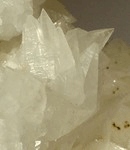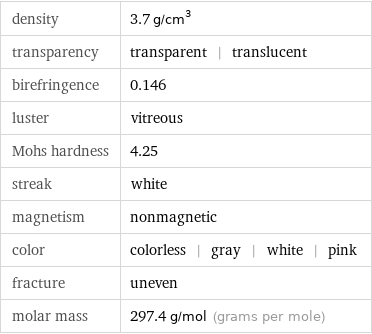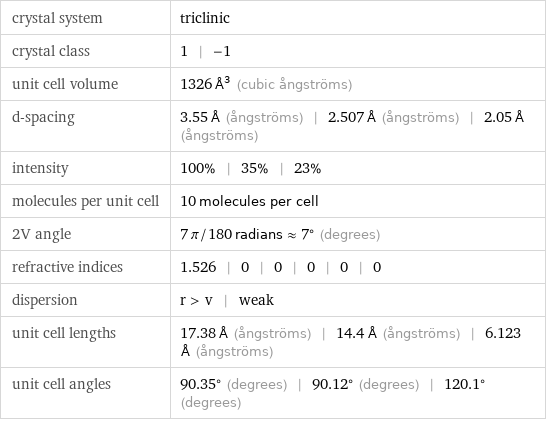Input interpretation

alstonite (mineral)
Image

Image
General properties

alternate names | bicalcareocarbonate of barytes | bromlite formula | BaCa(CO_3)_2 discovery year | 1841
Basic properties

density | 3.7 g/cm^3 transparency | transparent | translucent birefringence | 0.146 luster | vitreous Mohs hardness | 4.25 streak | white magnetism | nonmagnetic color | colorless | gray | white | pink fracture | uneven molar mass | 297.4 g/mol (grams per mole)
Units

Mineral identifiers

Strunz ID | V/B.04-50 Dana ID | 14.2.5.1
Crystallographic properties

crystal system | triclinic crystal class | 1 | -1 unit cell volume | 1326 Å^3 (cubic ångströms) d-spacing | 3.55 Å (ångströms) | 2.507 Å (ångströms) | 2.05 Å (ångströms) intensity | 100% | 35% | 23% molecules per unit cell | 10 molecules per cell 2V angle | 7 π/180 radians≈7° (degrees) refractive indices | 1.526 | 0 | 0 | 0 | 0 | 0 dispersion | r > v | weak unit cell lengths | 17.38 Å (ångströms) | 14.4 Å (ångströms) | 6.123 Å (ångströms) unit cell angles | 90.35° (degrees) | 90.12° (degrees) | 120.1° (degrees)
Wikipedia summary

Alstonite, also known as bromlite, is a low temperature hydrothermal mineral that is a rare double carbonate of calcium and barium with the formula BaCa(CO 3) 2, sometimes with some strontium. Barytocalcite and paralstonite have the same formula but different structures, so these three minerals are said to be trimorphous. Alstonite is triclinic but barytocalcite is monoclinic and paralstonite is trigonal. The species was named bromlite by Thomas Thomson in 1837 after the Bromley-Hill mine, and alstonite by August Breithaupt of the Freiberg Mining Academy in 1841, after Alston, Cumbria, the base of operations of the mineral dealer from whom the first samples were obtained by Thomson in 1834. Both of these names have been in common use.